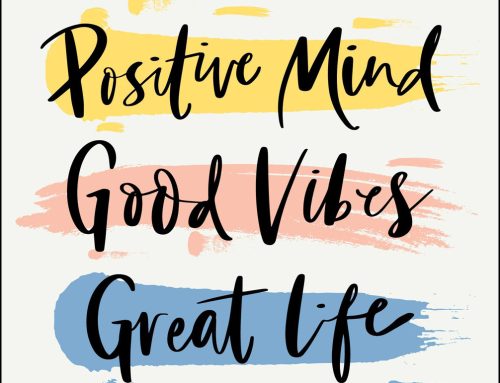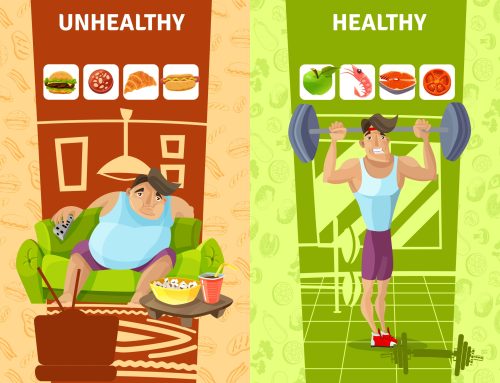
Doing regular guided self-reflections is a crucial part of boosting your mindset and turning a negative one into a more positive one and achieving greater success in life.
Self-reflecting helps you to center your mind and reduce stress. You instantly begin to feel more in control over yourself and your general well-being immediately after exercising self-reflection. It is very empowering feeling to take control and this in turn translates into forging a more positive mindset.
Stress impacts every single element of your overall well-being: your energy levels, your focus and concentration as well as impacting your heart health in a negative way.
Stress impacts everything…it can even impact your waistline because chronic stress releases high levels of cortisol that in turn cause your body to store fat in abdominal region.
Self-reflection is an empowering tool that combats the effects of stress and allows you to probe deeper into your psyche and uncover what it is in your life that is stressing you out. It helps to reveal a clearer game plan to move forward and improve the way you are approaching all the elements you desire to accomplish in life.
Meditation can help you focus on your deep breathing and relaxation techniques and is very helpful but in order to really free yourself from the stress you are feeling, you need to pinpoint what it is behind the stress you are feeling and work on resolving that issue first.
Ready to self-reflect? Here’s step by step instructions:
Relax and the Body:
Prepare yourself for self-reflection by relaxing your body. If your muscles are all tensed up, it will be much harder to get into a fully relaxed state where you can focus in mentally on doing the reflection.
Find a quiet place to call your own that will be devoid of distractions. Lay down with your arms by your side and focus on taking 5-10 deep breaths. Tense up one muscle as hard as you can, squeeze and hold this for a count of five and then let all the tension move right out of the muscle tissue. Continue on with this process until you have gone through your entire body, squeezing and relaxing each muscle group. As you perform this exercise imagine your arms and legs sinking further and further into the ground and your body feeling incredibly heavy.
Stay focused on your deep breathing and after about 3-4 minutes of this process, you’ll be ready to begin the process of self-reflection.
Center the Mind:
After doing the muscle relaxation technique, you should feel a bit more focused, but you can boost this focus even further by doing the following:
Think about one thing – something abstract. It may be a beautiful beach somewhere or a simple glass of water (the more calming this effect has on you – the better). Stay focused on that single thing for another 1-2 minutes. If other thoughts come to your mind, simply bring your focus back to center and the image you are trying to think about. Once you are able to successfully tune out everything around you, you are ready to begin your self-reflections.
Start Reflecting:
Begin the process by thinking about your last few days (since your last reflection).
Ask yourself:
What events took place during that time?
What helped you feel good about where you are in your life and what helped you feel not so good?
Did you accomplish something significant that you should be giving yourself credit for?
Did something not go as planned that needs more work in the coming days/weeks?
Assessing all of this helps you have a clear idea in your mind about how you’ve been doing and whether you have been putting into action steps to realize what you really want. Take 3-5 minutes to go through this stage of the process. If unwanted thoughts try and derail you, simply go back to center and focus on your target image.
Once you’ve completed your assessment you can move on to the last step…
 Coming up with an Action Plan:
Coming up with an Action Plan:
Last but not least as you move through your reflections, is to come up with an action plan that moves into the next day or couple days (depending on how often your reflections are scheduled). Ask yourself:
What do you want to accomplish?
What is it you want to specifically focus on working toward over the next day or two?
What are you going to try and change about how you behaved or actions you took?
Come up with a clear plan of action; be as specific as possible in defining what it is you want to accomplish and what steps you need to take. If you are vague or unclear with your plan, you lower your chances of success because your brain won’t feel entirely sure what it is supposed to be doing. Specificity is the number one rule of proper goal setting. Be sure to include all areas of your life that you want to improve on.
For example:
You may be focusing on improving a relationship, but you also want to focus on improving your health. This fine and acceptable, but you don’t want to extend yourself beyond working on 2-3 things at once or you will start feeling overwhelmed and you’ll likely not accomplish anything.
Remember, the trickle-down effect will also come into play so that as you accomplish one or two objectives, other areas of your life improve.
Don’t fall into the complacent trap and stay in your comfort zone. That will not get the job done.
If you just sit back and allow life to happen around you, there will be no forward movement and there is always room for improvement in some area of your life.
Never stop growing, learning and taking the appropriate action steps. The difference this makes in your life will amaze you.
You can regain vitality, boost your energy levels, relieve stress levels and lead a higher quality of life.
If you truly want to take command of your life…
“Healthy Self Healing” can help you do just that…
For more tools and resources from Carolyn Hansen to assist you in attaining your health and fitness goals and achieving the success you desire in life, please visit:





Leave A Comment